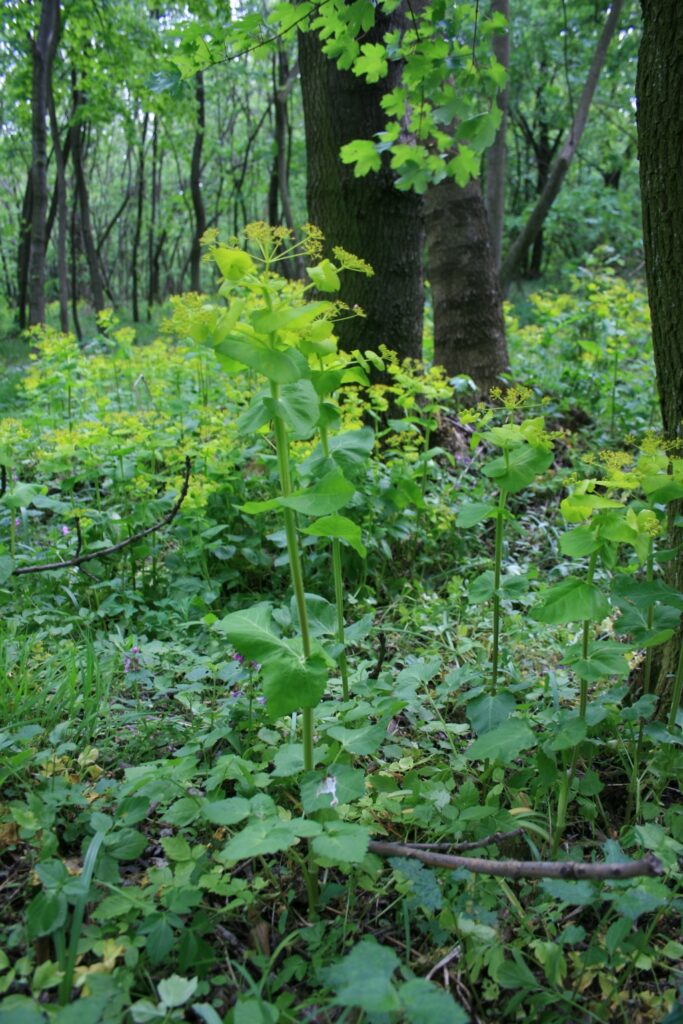(led by Katarína Vantarová, Iveta Škodová and Iva Hodálová)
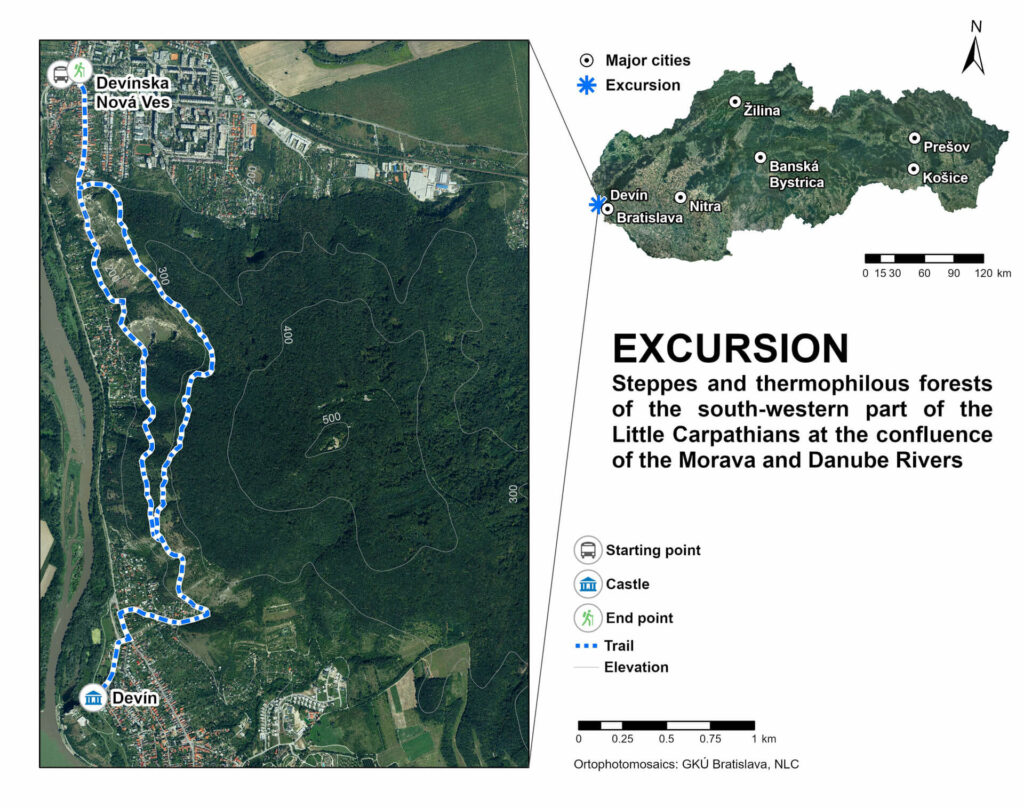
Guides: Katarína Hegedüšová, Iva Hodálová, Iveta Škodová
Plant Science and Biodiversity Centre, Institute of Botany, Slovak Academy of Sciences, Bratislava, Slovakia, katarina.hegedusova@savba.sk, iveta.skodova@savba.sk, iva.hodalova@savba.sk
Devínska Kobyla and Sandberg, National Nature Reserve and Protected Site, Devín castle
Location
Sandberg: 48°12’02.96″N, 16°58’26.08″E, 197 m a.s.l.
Weitov lom quarry: 48°11’37.97″N, 16°58’47.60″E, 192 m a.s.l.
Thermophilous oak forests: 48°08’53″N, 17°06’26″E, 336 m a.s.l.
Devín Castle: 48°10’25.92″N, 16°58’41.83″E, 212 m a.s.l.
Climate
Sub-continental, summer-warm, moderate dry with mild winter, the extra warm and dry climate is characteristic for sun-exposed, south-western steep slopes.
Mean annual temperature: 9 °C (maximum temperature 32.8 °C, minimum temperature –15.5 °C)
Mean annual precipitation: 604.9 mm (360.1 mm falls in the vegetation season)
Geology
About 300 million years ago the territory of Devínska Kobyla was part of the precontinent Pangea. Several times subsequently the area was covered by the sea and during this period limestone and dolomite were formed. Southern slopes of the NNR are created mainly by grey limestones, dolomites and carbonate breccia, the strata are 160-180 million years old. The top of the hill Devínska Kobyla is formed by Mesozoic quartzite. In geological and paleontological terms the abandoned sandpit Sanberg is one of the most important sites in Slovakia. It is extremely rich in fossil remains of marine, coastal and terrestrial fauna and flora. It represents a stratotype locality for stratigraphical sub-stage called “devín”. Rock remains of Neogene Sea that covered the Vienna basin create its area. It is also a Neogene paleontological locality of European importance (Feráková et al. 1997, Hegedüšová 2009).
Soils
The prevailing soil types on shallow and dry places are Eutric Cambisols developed on the Mesozoic quartzite and on diluvia of carbonate-silicate deposits. They are mostly covered with oak-hornbeam forests. Rendzic Leptosols are developed on limestones and dolomites covered mainly with dry grasslands and open Mediterranean xero-thermophilous oak forests. Regosols and sands are less frequent (Sandberg, Merice) developed on sandstones (Bedrna 1997).
Geography
The National Natural Reserve (NNR) Devínska Kobyla and the protected site Sandberg are the southern-most parts of the Protected Landscape Area Malé Karpaty Mts, called also Devínske Karpaty Mts, located between the Moravaand Danube rivers, where the Carpathian Mountains meet with the Pannonian Basin. The Slovak-Austrian border, the municipal parts of Bratislava, former villages Devínska Nová Ves and Devín, surround it also. This unique geographical position resulted in the extraordinary physical-geographical conditions, such as topography and climate, with specific, rare and rich species steppe flora and fauna. From a morphometrical point of view Devínska Kobyla Mt. has an approximately symmetrical shape and is distinctive by its peripheral slopes with an inclination from 25 to 30°, and by the vaulted central part where slope angles range from 10 to 15°. Its elevation ranges from 135 at the Danube, and Morava floodplain, to 514 m, at its highest point. The altitudinal difference between the Morava River (135 m) and the top of Devínska Kobyla Hill (514 m) is 379 m. Total area of reservation is 114.38 ha and it represents one of the NATURA 2000 sites and also Important Plant Area (IPA). It is located about 10 km from centre of Bratislava, capital city of Slovakia. The unique area of the instructive path is 2880 m long and 825 m width, with plenty of natural details to look at and the breathtaking panoramathic view of the confluence of the Danube and Morava rivers, the Devín castle and the Austrian Hainburg hills. In good weather conditions, even the Alps may be visible.
Nature conservation
Devínska Kobyla is included nowadays in the Protected Landscape Area Malé Karpaty Mts (PLA). It was proposed as an Important Plant Area with total area of 127 ha in 2004. The NNR Devínska Kobyla was originally established as two separate reserves, the first one Sandberg in 1964 and the State Nature Reserve Devínska Kobyla on SW slopes with thermophilous vegetation (27.97 ha) in 1965. Both reserves were united in 1986 and the part Merice above Devín village was added. This area is under the fifth level of nature protection (the highest possible in Slovakia). An instructive path across the western slope was opened in 1988 and renewed in 2000.
Habitats (according to Natura 2000 habitat classification)
6190 Rupicolous pannonic grasslands (Stipo-Festucetalia pallentis)
6240 Sub-Pannonic steppic grasslands
6210 Semi-natural dry grasslands and scrubland facies on calcareous substrates (Festuco-Brometalia)
40A0* Continental deciduous thickets
91H0 Pannonian woods with Quercus pubescens
9130 Asperulo-Fagetum beech forests
9180* Tilio-Acerion forests on slopes, screes and ravines
Vegetation synopsis
Class Festuco-Brometea Br.-Bl. et Tüxen ex Soó 1947
Order Stipo pulcherrimae-Festucetalia pallentis Pop 1968
Alliance Bromo pannonici-Festucion pallentis Zólyomi 1966
Ass. Poo badensis-Festucetum pallentis Klika 1931 corr. Zólyomi 1966
Ass. Festuco pallentis-Caricetum humilis Sillinger 1930 corr. Guterman et Mucina 1993
Order Festucetalia valesiacae Br.-Bl. et R. Tx. ex Br.-Bl. 1949
Alliance Festucion valesiacae Klika 1931
Ass. Festuco valesiacae-Stipetum capillatae Sillinger 1930
Order Brometalia erecti Br.-Bl. 1936
Alliance Cirsio-Brachypodion pinnati Hadač et Klika ex Klika 1951
Ass. Polygalo majoris-Brachypodietum pinnati Wagner 1941
Class Trifolio-Geranietea sanguinei T. Müller 1962
Order Origanetalia vulgaris T. Müller 1962
Alliance Geranion sanguinei R. Tx. in T. Müller 1962
Ass. Geranio sanguinei-Dictamnetum albi Wendelberger 1954 ex T. Müller 1962
Ass. Geranio sanguinei-Peucedanetum cervariae T. Müller 1962
Class Crataego-Prunetea R. Tx. 1962
Order Prunetalia spinosae R. Tx. 1952
Alliance Prunion fruticosae R. Tx. 1952
Ass. Prunetum fruticosae Dziubałtowski 1926
Ass. Waldsteinio geoidis-Spiraeetum mediae Zólyomi 1936
Alliance Berberidion vulgaris Br.-Bl. ex R. Tx. 1952 nom. cons.
Ass. Ligustro-Prunetum R. Tx. 1952
Class Quercetea pubescentis Doing-Kraft ex Scamoni et Passarge 1959
Order Quercetalia pubescenti-petraeae Klika 1933
Alliance Quercion pubescenti-petraeae Br.-Bl. 1932 nom. corr.
Ass. Lithospermo purpurocaerulei-Quercetum pubescentis Michalko 1957
Ass. Euphorbio-Quercetum Knapp ex Hübel 1959
Alliance Quercion petraeae Issler 1931
Ass. Sorbo torminalis-Quercetum Svoboda ex Blažková 1962
Class Carpino-Fagetea sylvaticae Jakucs ex Passarge 1968
Order Carpinetalia betuli P. Fukarek 1968
Alliance Carpinion betuli Issler 1931
Ass. Carici pilosae-Carpinetum betuli Neuhäusl et Neuhäuslová-Novotná 1964
Order Fagetalia sylvaticae Pawłowski ex Pawłowski et al. 1928
Alliance Fagion sylvaticae Luquet 1926
Ass. Carici pilosae-Fagetum sylvaticae Oberd. 1957
Order Aceretalia pseudoplatani Moor 1976 nom. cons. propos.
Alliance Melico-Tilion platyphylli Passarge et G. Hofmann 1968
Ass. Aceri platanoidis-Tilietum platyphylli Faber 1936
The high flora and fauna biodiversity due to the unique location, heterogeneity of the geological substratum, specific climatic conditions, human influence and vicinity of the Malé Karpaty Mts is a typical feature of Devínská Kobyla and Sandberg.
Forest communities
The original vegetation was formed by oak-hornbeam forests, xero-thermophilous oak forests with Quercus pubescens agg. on steep slopes with a limestone base and rocky grasslands, which are conserved in spite of human influence (vineyards, orchards, grazing, burning of grasslands, afforestation by non-native trees e.g. Pinus nigra, Fraxinus ornus). Since 1949, a continuous area of xero-thermophilous pastures (at the time 85.8 % of the total area) has been greatly fragmented into the present mosaic vegetation of rocky and dry grasslands (33.4 %) – steppe communities along with sub-Mediterranean xero-thermophilous oak woods Lithospermo purpurocaerulei-Quercetum pubescentis and Euphorbio-Quercetum. Among the trees on the south-western slopes we can find Prunus fruticosa, P. mahaleb, Cornus mas, Quercus pubescens agg., Q. cerris and Ulmus minor. In those parts of the forests that are more exposed to sunlight it is possible to find the originally Mediterranean species Smyrnium perfoliaum, which was rare in the past and is quickly spreading nowadays. On the northern slopes beech forests fragments of Carici pilosae-Fagetum are developed. Fagus sylvatica reaches here the lowest altitudes in the Western Carpathians Mts. On screes there are stands with Tilia cordata and Acer campestre, which belong to the alliance Melico-Tilion platyphylli. The most frequently occurring community in the NNR is Carici pilosae-Carpinetum with characteristic spring aspect created by Galanthus nivalis, later replaced by Hepatica nobilis, Corydalis cava and Anemone ranunculoides. Among non-native trees Robinia pseudoacacia and Syringa vulgaris are the most common. The continuous human impact on the area has increased the diversity of plant species.
Grassland communities
Cutting down and burning the woods created more space for plant species and communities typical of rocky areas. Dry calcareous grasslands have developed in the territory of Devínska Kobyla due to traditional land use such as grazing and/or mowing. In phytosociological terms they belong to the class of Euro-Siberian steppes, Festuco-Brometea. The prevailing vegetation types of the xero-thermophilous grasslands communities are Poo badensis-Festucetum pallentis, Festuco pallentis-Caricetum humilis, Festuco valesiacae-Stipetum capillatae, Polygalo majoris-Brachypodietum pinnati and Pannonian fringe vegetation Geranio sanguinei-Dictamnetum albae and Geranio sanguinei-Peucedanetum cervariae. The stands of Festuco valesiacae-Stipetum capillatae (alliance Festucion valesiacae) represent a type of continental steppe. These communities were traditionally maintained by extensive grazing, mowing and burning.
According to the phytogeographical division of Slovakia (Futák 1984), Devínska Kobyla is situated on the border of two phytogeographical regions: the region of Pannonian flora and the region of West Carpathian flora. Finally, it belongs to the region Eupannonicum with close phytogeographic relationship to the Hundsheimer hills in Austria. In Devínska Kobyla we can find Western Carpathian, Pannonian and Mediterranean species growing together, and reaching the most western or northern boundaries of their natural occurrence. In the species composition of vegetation xero-thermophilous and calciphilous elements dominate. Altogether, more than 1500 vascular plant species and subspecies including adventive taxa (Feráková et Hodálová unpubl.) were recorded here. All communities host a high number of endangered and rare species. 376 are threatened and 33 of them categorized as critically endangered (CR), endangered (EN) and vulnerable (VU), as well as 10 species in the category extinct (EX) are included in the Red Data Book, Vol. 5 of the Slovak and Czech Republics (Čeřovký et al., 1999). Species such as Conringia austriaca, Ononis pussila, Orobanche artemisiae-campestris, O. teucrii, Peucedanum arenarium and on the limestone rocks Rhamnus saxatilis subsp. saxatilis were recorded here and nowhere else in Slovakia. Gypsophila paniculata is on the verge of extinction. A famous spring aspect is created by Adonis vernalis, Pulsatilla pratensis and P. vulgaris subsp. grandis, later joined by Iris pumila in three colour tones – purple, yellow and white. The rare orchids Anacamptis morio, A. pyramidalis, Neotinea tridentata subsp. tridentata, N. ustulata subsp. ustulata, Ophrys apifera, O. holoserica, O. insectifera, O. sphegodes bloom in May together with Stipa grasses. On the steep slopes and open sands with the shallowest substratum calcareous grasslands can be found. The dominating Festuca pallens is accompanied by Fumana procumbens, Linum tenuifolium, Potentilla incana and Scorzonera austriaca. On the gentle slopes Carex humilis is dominant with numerous chamaephytes and ephemeral therophytes such as Allysum montanum, Globularia bisnagarica, Helianthemum nummularium subsp. grandiflorum, Jurinea mollis, Teucrium montanum, T. chamaedrys and Thymus praecox. On the rocky and moderately deep soils Stipa capillata and Festuca valesiaca stands are developed. The extra-zonal vegetation is represented by Pannonian fringe vegetation with common species Geranium sanguineum, Dictamnus albus, Cyanus triumfettii, Anemone sylvestris and Tephroseris integrifolia. An important feature of the floristic composition of the NNR is occurrence of various species and hybrids of the genus Viola. The area of the NNR is important also because of diversity of cryptogams: 110 lichen species, 100 bryophyte species and 331 fungi have been recorded.
Fauna
From the zoological point of view Devínska Kobyla is one of the places with the highest biodiversity in Slovakia. According to the zoogeographical classification of the terrestrial bio-cycle of Slovakia (Jedlička & Kalivodová 2002), the area of the NNR belongs to the region of West Carpathians, province of Pannonian steppe, part Devínska Kobyla Mts, on a border of the region of deciduous forests and steppes. It is particularly characterized by a high abundance of thermophilous and xerophilous species of insects, which create unique zoological communities. A lot of species reach the most northern boundary of their natural occurrence. Many species are rare, such as insect Mantispa styriaca, beetles Lucanus cervus, Oryctes nasicornis, Rosalia alpina and butterflies Zanclegnatha tarsicristalis, Yponemeuta vigintipunctatus and Procris gerryon. Xerothermic species including cicadas (Tibicina haematodes), crickets (Gryllus desertus), neuroptera (Ascalaphus macaronius), spiders (Eresus cinnaberinus), grasshoppers (Saga pedo) and Mantis religiosa contribute to the exotic atmosphere. Mantis religiosa, with two coloured varieties, is the only representative of Mantodae. A lot of them are protected and endangered, e.g. Papilio machaon, Iphiclides podalirius, Ascalaphus macaronius, Lucanus cervus, Parnassius mnemosine. On the open sandy places Meloe violaceus is also frequent. Altogether, 44 species of terrestrial gastropods were found here. The most abundant are Granaria frumentum, Balea biplicata and Truncatellina cylindrical. The amphibians are represented by Bufo bufo, Bufo viridis and Salamandra salamandra. In the southern slopes emerald coloured male lizard Lacerta viridis can be frequently seen. From the reptiles there are also Anguis fragilis, Natrix natrix and N. tesselata. The deciduous forests are the home of Elaphe longissima, the biggest snake in Slovakia. The endangered bird species, which nest here, are Corvus corax, Falco subbuteo, Tichodroma muraria and Upupa epops. The sandstone walls of Sandberg are attractive with the appearance of European bee-eaters Merops apiaster. Mammals are not as strongly represented as other animal groups. Among the typical representative of rodents (Rodentia) are Sciurus vulgaris, Microtus arvalis and Glis glis. Lagomorpha represents Lepus europaeus. Typical representatives of Carnivora are Meles meles and Vulpes vulpes. Artiodactyla are here represent by Capreolus capreolus and Sus scrofa.
Management and threats
The present state of vegetation on the Devínska Kobyla NNR is still conditioned predominantly by succession (Hegedüšová 2009). The xero-thermophilous grassland vegetation is strongly threatened by changes in management, and soil conditions, the first of all by the abandonment of the traditional use of the landscape and inappropriate human intervention in the past. During the state afforestation programme from 1956 many non-native species were planted, mostly Pinus nigra, further Prunus serotina and Aesculus hippocastanum (Kaleta 1968). Obscuration and needles cast, which chang the pH of soils, are liable for the threat of many rare endangered species. At the beginning of 2016, Pinus nigra and shrubs were cut down and permanent monitoring plots were gradually established to study the restoration of xero-thermophilous grassland vegetation. Soil erosion caused by cyclists riding on the sensitive south-western slopes and the construction of new open fires can damage the valuable plant communities in the area. Another problem represents non-native plant species, which grow in the surroundings of gardens, spread to the protected area and make it more difficult for native species to survive.
The results of the monitoring of permanent plots showed that goat grazing and shrub cutting/mulching resulted in the suppression of the spreading of competitively strong grasses such as Bromus erectus, Arrhenatherum elatius and shrubs Crataegus sp., Rosa spec. div. and Prunus spinosa and to an increase in the species diversity of grasslands.
Devín castle (9 – 15th century), 212 m a.s.l.
Due to its favourable geographical location and climatic conditions, Devínska Kobyla and its surrounding were one of the first parts of Slovakia to be inhabited (Viceníková et al. 2002). Neolithic people built the first dwellings in this area on the left side of the riverbank Dunaj between 5000 and 3500 BC. The strategic position of this place, the cliff (altitude of 212 m) at the confluence of the Dunaj and Morava rivers was an ideal place for a fort. Its owner could control the famous trade route along the Danube as well as one branch of the Amber Road. That is why the site had become a strategic military post during the time of the Bronze and Iron Ages (900 BC). In the Younger Iron Age, the territory was populated by Celts, which started to cut down the trees. At the times of the Roman Empire, Devin was still an important military station. In that period the Romans started growing wine grapes in vineyards on the Devínska Kobyla hills. Devín fortress was first mentioned in the documents from 864 AD under the name Dowina and Devín castle is one of the oldest castles in Slovakia. A pre-romanesque church was built on the castle approximately between 850 and 863/870. During the Greater Moravian Empire (9th century), the castle was a significant boundary fortress as well as one of the political and administrative centres. Two Slavonic fortresses (Sandberg and quarry) were built on the hillsides of Devínska Kobyla to protect the kingdom of Prince Rastislav. After the fall of the Greater Moravian Empire, the castle served as a boundary castle of the Hungarian state. In the 13th century, a stone castle was built to protect the western frontier of the Hungarian Kingdom and in the 15th century, the palace was added. It witnessed also the invasion of Turkish armies, German and Croatian colonisation (Devínska Nová Ves village). The last owners of the Devín Castle were the Counts of the Pálffy family. In the 19th century the castle was destroyed by the retreating forces of Napoleon I of France. Since 1965 archaeological research in the castle area and partial reconstruction of the ruins have been made. The castle hosts an interesting museum.
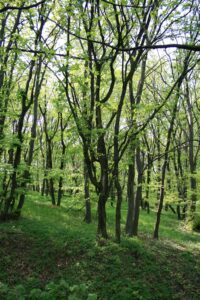
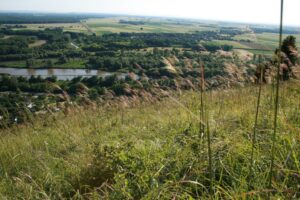
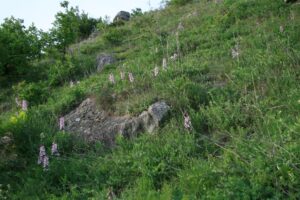
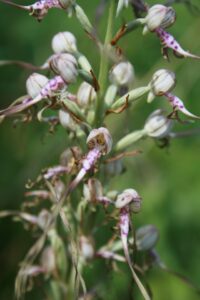
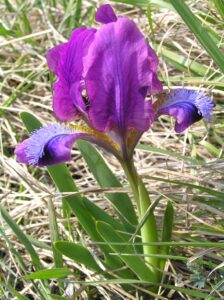
OLYMPUS DIGITAL CAMERA 